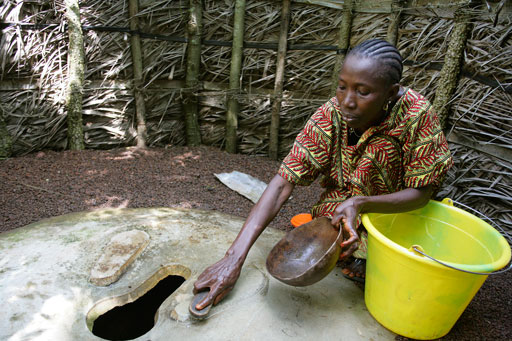10.2.2 Socio-cultural barriers
There are a number of social and cultural or religious barriers which might prevent people from adopting good WASH behaviours. For example, many mothers believe that child faeces are harmless and hence they do not discard them properly. It is very common to see people washing their hands with only water even though soap is available. Figure 10.5 shows a woman cleaning a latrine – it is rare to find a man engaged in such activity, which may lead to lack of interest in the issues of cleanliness.

There may also be a preference for water from natural sources for drinking due to perceived taste differences when water has been treated (Figure 10.6).

Figure 10.7 shows water that has been left in a church to be blessed. Can you identify the health risk here and the barrier that is involved?
The water has been left in a open containers, so could become contaminated. The barrier here is a religious one, arising from a belief that the water cannot be blessed unless it is in an open container. In the FOAM framework this is an ‘attitudes and beliefs’ determinant.

All these factors can lead to poor adoption of good hygiene and sanitation practice.
10.2.1 Personal barriers
